Alumni of once-segregated Texas school mark its national park status
That fall morning in 1954 is a memory Jessi Silva cannot let go.
At 6, she had just started first grade. The Mexican American students of Blackwell School were marched to the flagpole, kicking up clouds of dirt along the school's barren grounds in Marfa, Texas.
Moments earlier, teachers had handed out slips of paper and told them to copy the letters on the blackboard: S-P-A-N-I-S-H. Now all those slips were stuffed into a cigar box, then placed in a miniature grave in a make-believe burial. “Mr. Spanish,” they were told, was being laid to rest.
“They didn’t explain why,” recalled Silva, now 76. “The only thing I remember is they said, ‘From now on you will not be allowed to speak Spanish in school.’”
Until mandatory integration measures forced its closure in 1965, Blackwell was one of numerous schools throughout the American Southwest and beyond that students of Mexican descent were compelled to attend, separate from their white peers, in an era of de facto segregation. About 4,000 students attended Blackwell during its 56-year run.
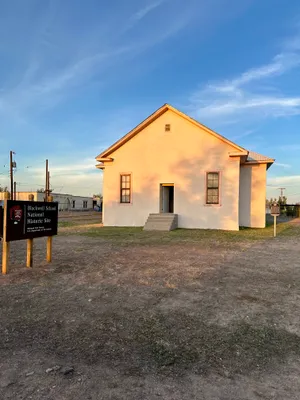
Now the still-standing structure in far west Texas’ Presidio County is officially celebrated as the country’s newest national park site and just the second honoring modern Latino history. While national parks might conjure visions of sprawling wildlands and majestic vistas, the National Park Service has put growing emphasis on historic sites highlighting untold stories of American diversity – and some hope Blackwell’s designation will open the door to greater recognition of the nation’s Latinos.
“A complete history of America must include everyone’s story,” said park service director Chuck Sams, in a statement issued by the U.S. Department of the Interior. “The designation of Blackwell School National Historic Site is an important step in telling a more diverse and inclusive history of the Mexican American experience in our country.”
The history of Blackwell ― “written by prejudice rather than law,” as the statement put it ― is a reminder of how racism and cultural disparity informed education and social systems in the U.S. for decades. For those of Mexican descent, it persisted despite their classification as legally white in the Treaty of Guadalupe Hidalgo, which ended the Mexican-American War in 1848.
“There was no law that said they had to be segregated, but you started seeing these so-called ‘Mexican schools’ to segregate them from their Anglo counterparts,” said historian Cristobal Lopez, Texas field representative for the National Parks Conservation Association, a Washington, D.C.-based advocacy agency that aided the site’s bid for national park status.
While Silva’s feelings about her experience are complicated, she’s among a number of alumni whose alliance and foresight laid the groundwork for Blackwell’s preservation. Built in 1909, the three-room adobe schoolhouse is one of few such “Mexican schools” preserved in original form.
“It’s very rare to find a structure from that era that has not been converted to modern use or demolished,” said Kyle Groetzinger, associate communications director for the conservation association.
The effort to save Blackwell became a rallying point for a community that has gone from dusty desert outpost to trendy arts community, population 1,725.
'National parks should tell all Americans' stories'
The nation's national parks, visited by more than 325 million people in 2023, have a unique mission in America: Along with mountains and rivers and canyons, they draw attention to revealing chapters in U.S. history ― places where misdeeds were done, movements launched, heroes made and lessons left to be learned for future generations. In some cases, they offer validation of one's place in the American mosaic.
The last decade has seen the creation of multiple national park sites recognizing America's diverse history. Among them are the Harriet Tubman National Historical Park in Auburn, New York and Stonewall National Monument in Manhattan's Greenwich Village, site of the 1969 riots that sparked the LGBT movement. There's also the Birmingham Civil Rights National Monument in Alabama, honoring the civil rights campaign of 1963, including the 16th Street Baptist Church where four young Black girls were killed by a bomb planted by white supremacists.
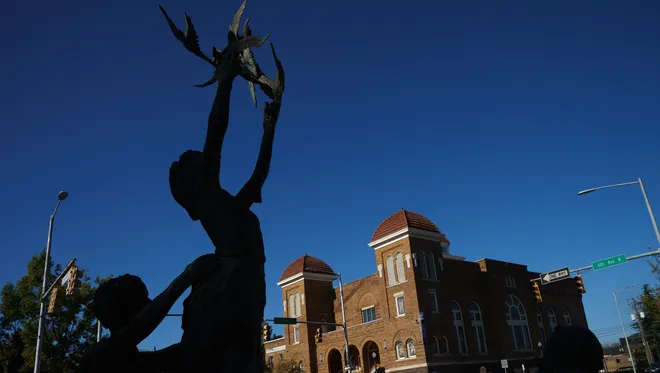
Camp Nelson National Monument in Jessamine County, Kentucky, highlights the Union Army camp that became a Civil War recruiting station for formerly enslaved Black soldiers who could earn their freedom by enlisting. Amache National Historic Site in Prowers County, Colorado, preserves an internment camp site to which Japanese Americans were forcefully relocated during World War II.
Last year, the Emmett Till and Mamie Till-Mobley National Monument, encompassing several locations in Chicago and Mississippi, was designated by President Joe Biden to memorialize the 14-year-old Black teen whose 1955 abduction and lynching would spark the modern civil rights movement.
The sites achieved national park prominence because of their unique place in American history ― not so much because of their location, but because of what happened at them.
"National parks should tell all American stories, and maybe especially stories we're not always proud of," Groetzinger said. The National Park Service, he said, is starting "starting to make great strides in expanding the range of stories they tell at these parks."
The divisions in today's social climate make such gestures more important, he said.
“We’re at an inflection point in our country, and this is a chance to start genuine dialogue about discrimination,” Groetzinger said. “Establishing sites like Till and Blackwell do not address systemic discrimination, but they’re a starting point in getting to know our neighbors better and creating a better world together.”
A 1950's view of Marfa, Texas
In Texas, the nation's newest national park offers a glimpse into a period both shameful and yet illuminating of America's past.
A description of mid-1950s Marfa appears in “George Stevens, A Life on Film,” Marilyn Ann Moss’ biography of the man who directed the 1956 epic, “Giant.” The film, starring Elizabeth Taylor, Rock Hudson and James Dean, was partly shot there.
According to Moss, the film crew arrived in June 1955 and soon began griping about the heat and lack of amenities. Moss quotes the autobiography of actress Mercedes McCambridge, who reviled the setting as “the ugliest landscape on the face of the earth. Sheer nothing! No hills, no water, no trees, no grass, just vast acres of creepy-crawlies and dive-bombing bugs.”

Marfa was born in 1881 as a freight stop on the Southern Pacific railroad, and the tracks cutting through town would largely divide its white and Mexican populations. While some children found ways to forge bonds with their across-the-tracks counterparts, Blackwell alumni recall feeling unwelcome on the north side, home to Marfa’s nicer stores, amenities and the all-white elementary school whose used books and equipment were passed on to Blackwell kids.
Silva remembers segregated theaters, separate Catholic churches and stores with signs prohibiting Mexicans. The funeral for “Mr. Spanish” had left her sad and hurt and would eat at her for years, along with memories of students facing the paddle for language or other violations.
“We could hear kids getting paddled in the principal’s office down into the classrooms,” she said. “There were times when they would paddle a boy in the classroom and make him turn around and face the class. We were all crying. We felt for him. They would paddle us for any little thing – for speaking out of turn or dropping your pencil on the floor. We were like zombies.”
Silva knows not all her classmates harbor the same resentment, while others remain so pained that they won’t speak of it. But for her and other alumni who worked to save the school, national recognition of the site and its place in history signifies a validation of their experience.
“They’re thankful their story is now going to be told on the national stage,” Lopez said. “They can’t shy away from the fact that they were part of a segregated system, but they want people to know they persevered.”
Alumni join forces to preserve aging structure
The effort to save Blackwell launched in 2006 with a group of alumni who’d been planning a school reunion. By then, all that remained of Blackwell’s five-acre, six-building complex was the original, three-room adobe schoolhouse and a band hall behind it.
After being tipped off about district plans to dispose of the buildings, they negotiated with district leaders to assume control of the site on a 99-year lease for $1 a year so that the structures could be preserved.
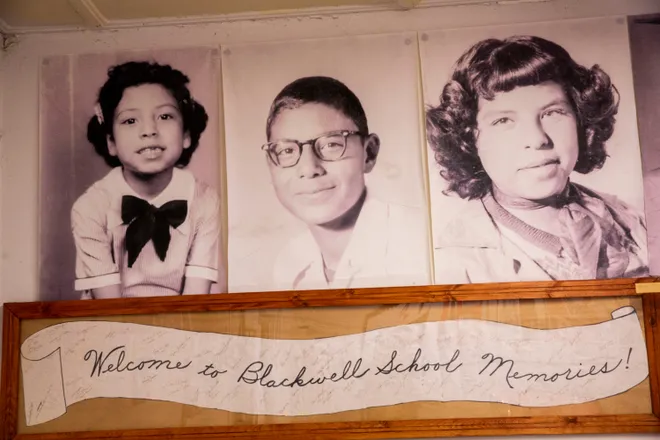
Their newly created Blackwell School Alliance revived the site as a community center and museum, collecting oral histories and hundreds of artifacts donated by Marfa residents and alumni. More recently, the alliance worked to get Blackwell recognized by the Texas Historical Commission and then added to the National Register of Historic Places.
The accomplishments were “major steppingstones” toward national park status, said Daniel Hernandez, a Dallas communications executive and Marfa native who now heads the alliance. “Our alumni have been our biggest champions in this process. It really is a testament to that grassroots effort.”
Among the alliance’s members were longtime residents like Mario Rivera, who attended the school from 1950 to 1957 and remembers playing in the school playground, a skimpy patch of mostly dirt sporting a slide, swings and merry-go-round along with basketball and volleyball courts.
“Then I’d come home, and mama’s got dinner,” recalled Rivera, who spent 32 years as Presidio County treasurer. “Those were the golden years.”
The bubble of his Marfa barrio was all Rivera knew, the kind of small-town community where bike-riding kids knew it was time to go home when the streetlamps came on. His family couldn’t afford the nicer shops north of the tracks, and no one pushed the segregation issue. It was just the way life was.
He never felt his teachers at Blackwell were condescending and said he understands why they wouldn’t let pupils speak Spanish.
“I guess they wanted us to become more fluent in English,” he said. “But the minute we left the school grounds, it was puro Spanish.”

Rivera eventually earned a business degree at Sul Ross State University in nearby Alpine. At the time, Marfa’s limited employment opportunities prompted most graduates to move elsewhere, and the city’s economy suffered as a result.
That started to change once the city began to be reborn as an artists’ colony. Now, the cost of living has skyrocketed and Marfa is a trendy celebrity hangout.
But one thing hasn’t changed, Rivera said.
“The majority of Mexicanos are still south of the tracks,” he said.
'This was an untold story in American history'
Gretel Enck is among the city's newcomers, a novelist who visited nearby Big Bend National Park and swooned over the desert landscape and Marfa's growing arts community.
“The thing about Marfa is that it’s this authentic borderland community,” Enck said. “We pack the stands for Friday night football with our six-man football team. All the things you imagine about small-town Texas are very real here.”
Enck moved to 2015, the same year PBS released the documentary “Children of Giant,” about Marfa’s role in the making of “Giant.” Marfa’s standing-room-only screening inspired Enck to become more involved with Blackwell, and she took over the museum’s Saturday visitor hours.
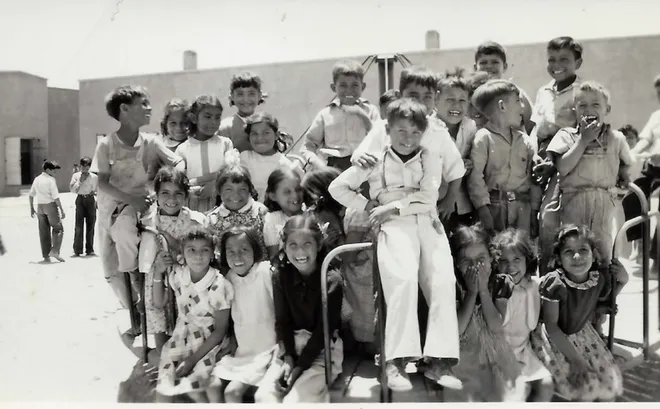
Within a year Enck had been asked by the alliance’s outgoing president to take over the group, which had funded critical infrastructure work on the building but wasn’t sure what to do next. She started looking into whether Blackwell might qualify as a national park site.
“I didn’t know anything about windows or adobe bricks, but I had this idea that this place had national significance,” Enck said. “We think of school segregation as something that happened to African American kids, and it became obvious that this was an untold story in American history…. We had an opportunity and an obligation to make sure it was preserved.”
Around 2018, Enck ran into then-U.S. Rep. Will Hurd at a local coffee shop and took the opportunity to explain the group’s aspirations. Hurd connected her with the conservation association, which partnered with the alliance to promote bipartisan bills designating Blackwell as a national park.
President Biden signed The Blackwell School National Historic Act into law in October 2022.
“I’m somebody who has big visions and dreams, and those often don’t work,” said Enck, who stepped down as alliance president last year. “But when you’re on the right path, all the doors open, and I felt like that was the case with Blackwell School.”
For one student, realization of injustice sets in
Silva was the youngest of four siblings who all attended Blackwell. So, too, did their parents, though both dropped out of school before seventh grade to work or help their impoverished families at home.
As Silva began third grade, her father moved the family to northern California, where he had gotten full-time work. Suddenly, she was sitting in classrooms alongside white, Black and Asian kids. She began questioning why things weren’t the same back in Texas.
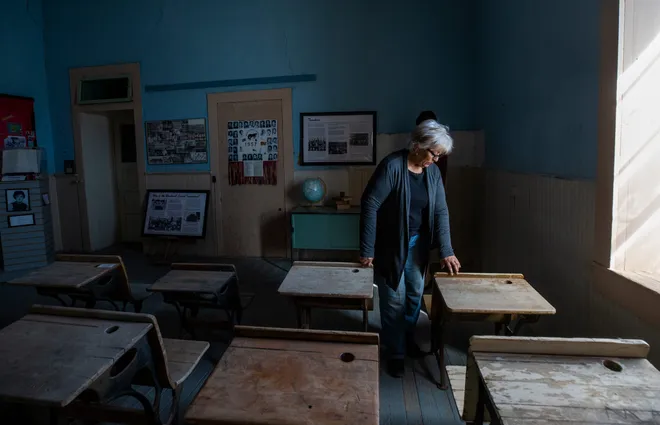
A few years later, Silva’s family moved back to Marfa. In eighth grade, she recalls being among several students who quizzed their white teacher just before lunch about why her own children wouldn’t attend Blackwell.
“She said, ‘Because they live closer to the other school,’” Silva remembered. “We said, ‘They could come with you.’ And when we came back from lunch the principal was waiting for us with the paddle and said he didn’t want to hear that kind of talk anymore.”
Silva said her lingering bitterness motivated her in positive ways – to become more outspoken, to fight for her workplace union, and finally to help preserve Blackwell as a symbol of a larger phenomenon she now understands.
Enck, the former alliance president, said while some might say Blackwell was justified in ensuring that students learned English, children would have learned enough to get by after a couple of years there given that they couldn’t speak their native language. Why, then, could they not attend the school north of the tracks?
She hears from alumni an appreciation for the schooling they received, and in their collective voices and memories she understands that many found in their geographic, economic and cultural isolation a sense of refuge from the prejudice they and their families faced in the greater community. Their Marfa, she said, was a place where “they didn’t have to feel the sting of differentiation in their face every day.”
“So much about Blackwell School was wrong, and yet there’s this resiliency,” Enck said. “Many got a good education and had good memories of being there, even though they were bristling against the system.”
'It's part of history, whether anybody likes it or not'
Blackwell joins California’s Cesar E. Chavez National Monument as the second national park site to mark modern Latino American history, in that individuals who experienced that history firsthand are still alive.
The designation could also be a financial boon for the community; 20 miles north, the Fort Davis National Historic Site welcomes nearly 40,000 visitors annually. Lopez, the conservation association’s Texas rep, hopes the city will work to create better access to the Blackwell site, with more sidewalks and bike lanes in the area.
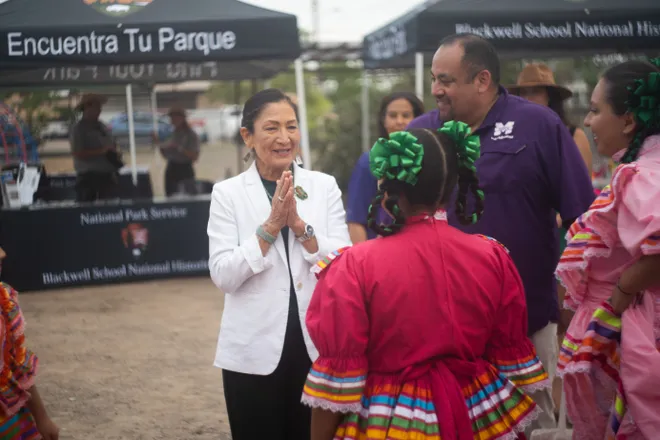
Rivera, the alum and former county treasurer, said the designation matters “because it’s part of history, whether anybody likes it or not. It’s part of the history of the state of Texas and of the United States. There’s some glorious history and there’s some that are more, um, ‘Oops, sorry about that.’ Marfa falls among those. Maybe Blackwell will be a reminder of an idea that was a bad idea.”
For Silva, it wasn’t until the act became law that could she finally let go of her anger.
“Enough is enough,” she said. “It’s a big step for Marfa. And it’s a huge step for the Hispanic community. We are someone.”
Disclaimer: The copyright of this article belongs to the original author. Reposting this article is solely for the purpose of information dissemination and does not constitute any investment advice. If there is any infringement, please contact us immediately. We will make corrections or deletions as necessary. Thank you.



